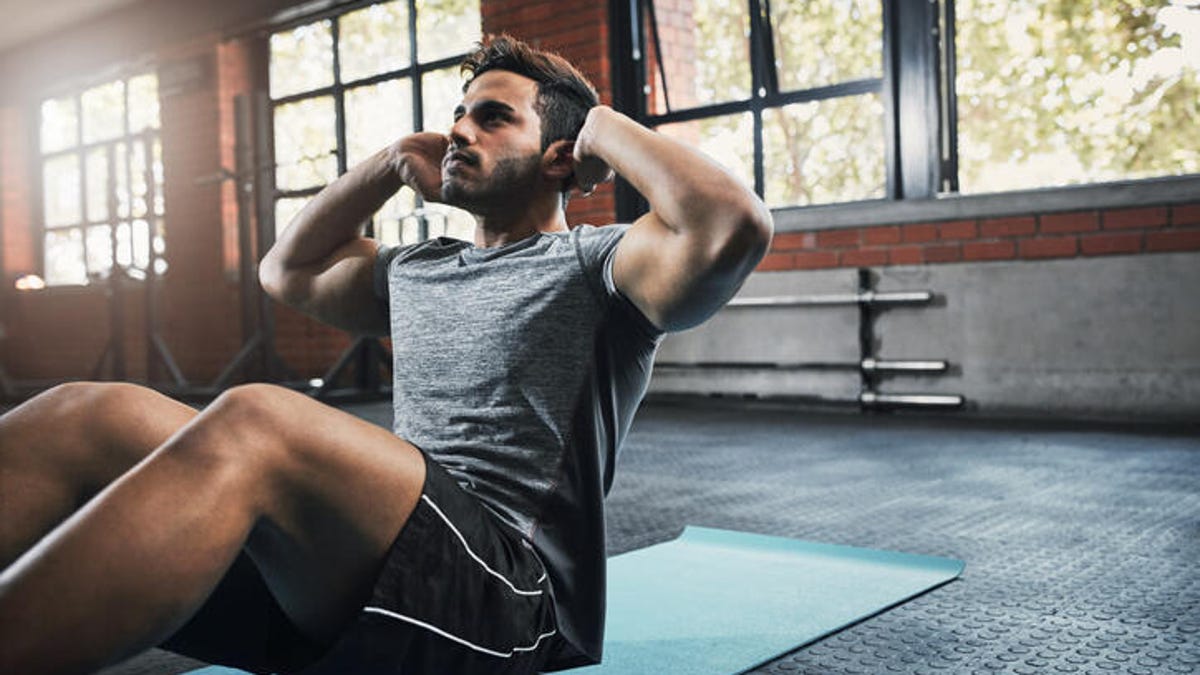Strength doesn’t always require dumbbells or machines. In fact, some of the most effective workouts for men—especially those in their 30s, 40s, and beyond—require no equipment at all. Daily bodyweight exercises can help you build lean muscle, boost metabolism, and improve everyday function, all from the comfort of your home.
This no-gym approach is especially valuable for men managing busy schedules, recovering from past injuries, or simply looking for a more sustainable fitness routine. By focusing on foundational movements that activate multiple muscle groups, you can maintain your strength, mobility, and independence well into older age.
Here’s a breakdown of five essential bodyweight exercises every man should do daily—and exactly how to perform them with maximum results.
1. Push-Ups – Upper Body Power and Core Activation
Primary Focus: Chest, shoulders, triceps, and core
Push-ups are a foundational move in any strength routine. They not only sculpt your upper body but also train your core muscles to stabilize your spine during motion.
How to Do It Right: Begin in a high plank position, hands just wider than shoulder-width. Lower your chest until it nearly touches the floor, keeping your body in one straight line. Push back up with control.
Recommended Routine: 3 sets of 8–12 reps
Beginner Option: Knee push-ups or incline push-ups using a wall or bench
2. Squats – Lower Body Strength and Balance
Primary Focus: Quadriceps, hamstrings, glutes, and core
Squats are essential for maintaining leg strength and joint mobility. Whether you’re climbing stairs, lifting groceries, or going for a hike, this move trains your body for real-life activities.
How to Do It Right: Stand with feet shoulder-width apart. Lower your body by pushing your hips back and bending your knees. Keep your chest lifted and knees aligned with your toes. Rise by pressing through your heels.
Recommended Routine: 3 sets of 10–15 reps
Beginner Option: Use a chair as support or try partial squats to ease knee pressure
3. Plank Hold – Core Control and Posture Support
Primary Focus: Abs, obliques, and lower back
A solid core supports your spine, reduces back pain, and improves overall stability. Planks help you engage all your abdominal muscles without any twisting or bending.
How to Do It Right: Get into a forearm plank position with elbows under your shoulders. Keep your body in a straight line from head to heels, and engage your core throughout.
Recommended Routine: Hold for 20–60 seconds, repeat for 3 sets
Beginner Option: Drop to knees or shorten hold time
4. Lunges – Functional Leg Strength and Coordination
Primary Focus: Quads, hamstrings, glutes, and balance
Lunges are perfect for unilateral strength—meaning they train one leg at a time. This helps correct muscle imbalances and improves stability, making everyday tasks easier.
How to Do It Right: Start standing. Step forward with your right leg and lower your hips until both knees are at 90 degrees. Keep your torso upright. Push back to the start and switch sides.
Recommended Routine: 3 sets of 8–10 reps per leg
Beginner Option: Perform in place or hold onto a wall for balance
5. Burpees – Full-Body Conditioning and Endurance
Primary Focus: Chest, legs, core, and cardiovascular fitness
Burpees are high-intensity and demand total-body engagement. They build explosive power, increase stamina, and torch calories—making them ideal for busy men who want fast results.
How to Do It Right: From standing, squat down and place your hands on the floor. Jump your feet back into a plank, do a push-up, jump feet back to hands, and finish with a jump up.
Recommended Routine: 3 sets of 8–10 reps
Beginner Option: Skip the push-up or step feet back instead of jumping
Tips to Maximize Results Without Injury
Getting the most from these exercises isn’t just about reps. It’s about quality movement and listening to your body. Here are a few key tips:
- Master Your Form: Good technique beats more reps. Always move with control and purpose.
- Warm Up First: Loosen your joints and increase blood flow with 5–10 minutes of light movement (jumping jacks, arm circles, or walking in place).
- Progress Over Time: Once exercises feel easy, add time, reps, or slower tempos to increase difficulty.
- Know Your Limits: It’s okay to be challenged, but stop if you feel sharp pain or discomfort.
- Support With Nutrition: Fuel your recovery with high-quality protein, fiber, and hydration.
Track Your Progress and Build a Habit
Consistency is the secret to results. Set aside 20–30 minutes daily to complete these workouts, even if it’s in the morning before work or during a lunch break. Use a notebook or fitness app to log your reps and how you feel each day.
Even small wins—like holding a plank 10 seconds longer or doing two more push-ups—are signs of progress. Over time, these gains add up, making you stronger, leaner, and more resilient.
Whether you’re training at home, outdoors, or while traveling, these bodyweight moves will help you stay fit for life—no gym needed.










